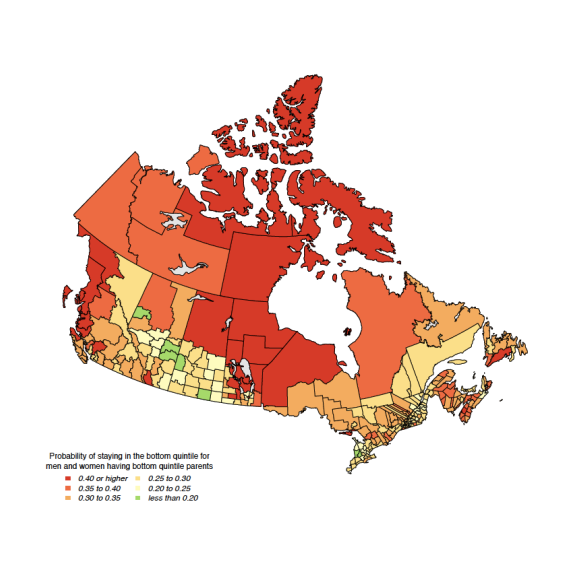What is concerning in Canada? Its Worsening Poverty and Inequality
Currently, Canada is at a tipping point for two of its most profound social and economic issues: poverty and income inequality. These issues are affecting communities all across Canada, which is only further increasing the gap between the rich and the poor. The number of poor people in Canada increased for the second year in a row in 2022, says Statistics Canada. That rose by 2.5 percentage points from 2021 and 3.5 percentage points from 2020. This news is representative of a trend which increasingly causes people from all sides in the country to worry about the future social and economic stability of this country.
Poverty in Canada: A Problem That the Country Won’t Solve
Poverty in Canada is a widespread issue that affects millions of lives. From the Canadian poverty rate, we can know how many people are living in the states of poverty. It’s an indicator of just how difficult it can be for families and individuals with low incomes to get by. The poverty line is the cost of living in Canada, or the amount required to meet one’s basic needs including housing, food and other essentials. But every year, it continues to drop,” he said, “And some of that is because housing costs are going up, inflation goes up and wages are not.
- Cost of Living Increase: Cost for basic needs such as housing, food and utilities continue to rise across Canada causing a growing number of Canadians to live below the poverty line.
- Homes Crisis: Real estate prices in big cities such as Toronto, Vancouver and Montreal are skyrocketing, forci ng low-income families to struggle even more to find affordable homes. This can result in overcrowding or homelessness.
- Stagnant Wages vs. Inflation: Every year, wages for working-class people don’t keep pace with inflation and the cost of living, which means that every year they have to work harder just to make ends meet.
- The Problem of Long-Term Poverty: If there isn’t substantial wage growth or increased access to affordable housing, Canada’s poverty problem will remain a long-term and chronic one.
The cost of living in Canada is increasing, especially the cost of housing, which is one of the top reasons poverty rates are on the rise. As house prices in Canadian cities like Toronto, Vancouver and Montreal continue to rise, it’s become more difficult for low-income families to secure affordable homes. Enough Canadians are still struggling to pay rent that they end up living in smaller, more cramped dwellings, or worse yet become homeless.
And prices for the basics like food, utilities and transportation also have risen as a result of inflation. That’s why so many Canadians with low incomes are forced to stretch their already stretched budgets further and find they do not have enough to make it across the essentials finish line. Poverty will continue to be a major problem in Canada as long as wages do not rise significantly or affordable housing is made available.
Canadians who own homes and investors who own units in secondary suites
Canada is also facing a major problem because the rich-poor gap is getting bigger everywhere across the nation. In summary, income inequality is the fact that the richest of people do not share wealth with the poorest. The rich-poor gap has only been deepened in recent years. Canada’s richest have become a lot richer, but the rest of the country struggled to make ends meet.
- The Rich-Poor Gap: The gulf between rich and poor in Canada is widening dramatically, with the new richest Canadians taking home far more than they used to while low-income and middle-class families are financially worse off.
- Wealth Concentration: The share of total wealth owned by Canada’s wealthiest 1% continues to rise from the 24.3% it owned in 2012, according to Canadian Centre for Policy Alternatives (CCPA).
- Reduced Economic Ladder: As income inequality widens, it becomes harder for nearly all low- and middle-income families to climb the ladder or escape poverty.
- Generational divide in wealth: Rapidly increasing property prices, particularly in places like Toronto and Vancouver, have been pricing young Canadians out of homeownership generationally as well as by income.
The top 1% of Canadians already own almost 25% of the country’s wealth, finds a 2022 report from the Canadian Centre for Policy Alternatives (CCPA). In Canada, the rich-poor divide is growing because greater and greater amounts of money are going to a tiny group of people. This stands in the way of low- and middle-income families traversing the economic ladder. Some Canadians are getting very rich here while middle-class Canadians aren’t getting noticeably richer and don’t have many opportunities to do so.”
There is a big chasm in wealth in Canada, as there is one for income. In the last several years, it’s become more evident how varied assets are — like real estate and stocks and savings. Inequality is particularly pervasive in Canada‘s major cities, where real estate costs are skyrocketing and many people can’t afford to purchase their first home. The soaring cost of homes has made it much more difficult for young adults to buy property, widening the wealth disparity between generations.
The Impact of Poverty and Inequality on Canadian Society
Tweet This Not just a people problem Poverty and inequality in Canada have impacts that extend well beyond individuals. Poverty and social inequality have disastrous effects on health, education and overall quality of life in Canada. Children who grow up in low-income households are more likely to suffer from health problems, perform poorly in school and have fewer job prospects as adults. These youth are also more likely to be excluded from peer groups and experience harsh treatment, perpetuating a cycle of poverty.
- Influence on health and education: poverty suppresses physical so well as mental health, constrains medical care access and result in low educational performance of children from poor families.
- Poverty Cycle: Children raised in poverty are typically underemployed and their social marginalization tends to perpetuate poverty from generation to generation.
Poverty and inequality in Canada, too, make it harder for people to get health care. And people without much money often find it hard to get the medical care they need, which can make their health worse as time goes on. Poor people also are more apt to experience mental health problems like anxiety and depression, which makes their life a lot worse.
And income inequality also makes people feel, as well, like they are not members of the same group — and one that might make them angry, perhaps unlikely to be trustful of institutions. Growing inequality can weaken social cohesion, because those who are struggling feel disconnected from people with most of the resources. This growing inequality also drains social programs and other public resources from which more people seek aid, and too few can pay.
How Canada confronts poverty and inequality
We need better solutions in the otherwise long-term and overall response to fix Canada’s problem with poverty and inequality. Increasing the minimum wage, making it easier to find affordable homes, and providing more money for people who need it can all be done in Canada right now. But we require lasting solutions if we’re going to actually solve the problems of poverty and inequality.
One of the best methods to cure Canada’s wage-inflation gap, which is rendering incomes more and more unequal in this country, is to prevent wages from lagging behind the cost of living. That would include raising Canada’s minimum wage to something that allows people to pay for the necessities of life. And finally, government programs and incentives to developers that ease the ability of people to find affordable housing can help address the housing problem that is driving up poverty rates.
Another method of combating inequality is through progressive taxes. Using tax policies to reach into the pockets of the richest Canadians and assure they pay their fair share to the economy, the government can bring about an even distribution of resources. Then you can spend the money on ways to support people left behind — with social programs for health care, teachers and affordable housing.
Also, writing policies that benefit everyone and support groups often left behind — such as Indigenous people in Canada, racial minorities and women — will go a long way toward removing the barriers in our institutions that help perpetuate inequality. To make society more fair, all Canadians need the same opportunities, regardless of where they’re born or how much money their parents have.
Final Thoughts
Poverty and inequality are major problems in Canada that we need to address with urgency, and over the long term. That the number of poor and poor people relative to rich people are on the rise cannot be ignored, pointing a need for more to be done in righting these societal miscarriages. With a variety of policies to reduce the gap between rich and poor, support all those who are on their margins and ensure everyone has access to the essentials of life — housing, health care — Canada can make things better for all its people. It is time for the people and government of Canada to do something to ensure that nobody gets left behind.




